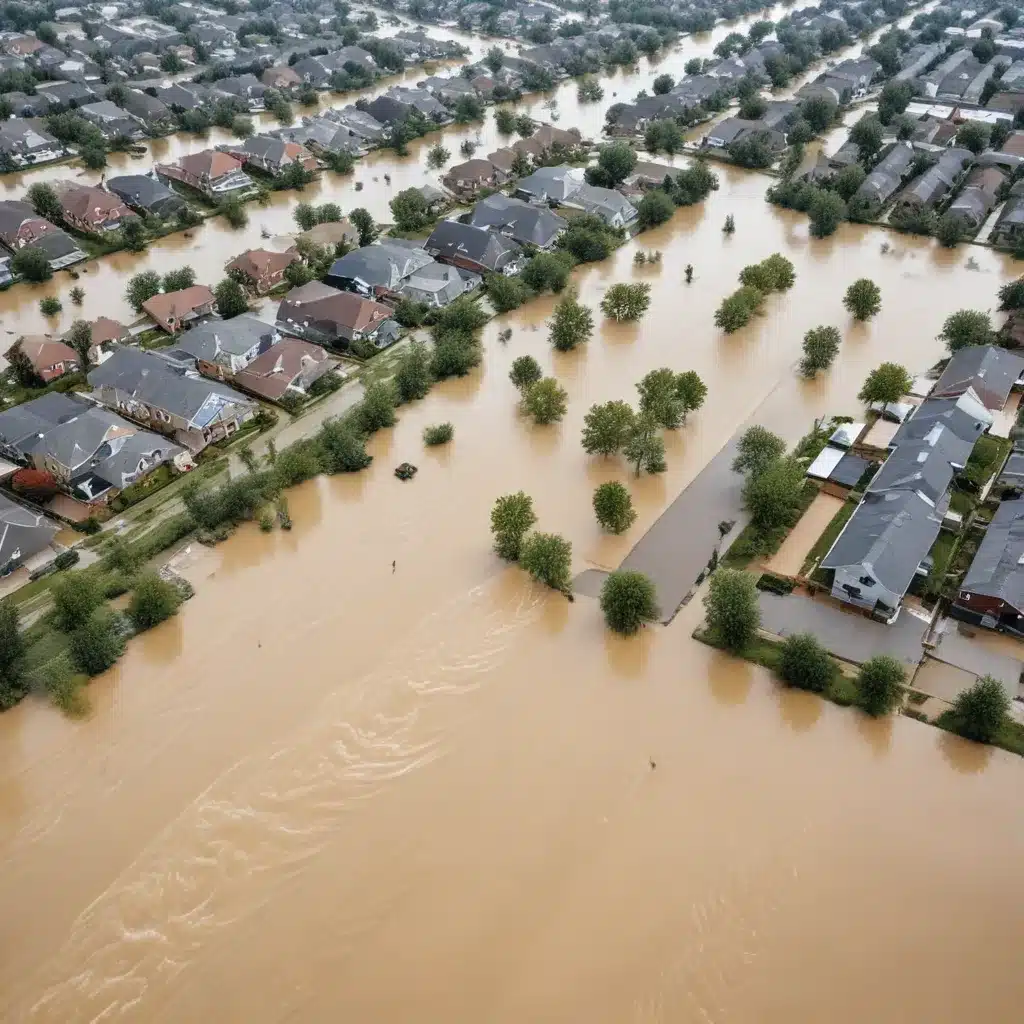
As an experienced water damage restoration specialist in Orlando, I’ve seen firsthand how climate change is impacting our community. Over the past decade, we’ve faced an increasing number of intense storms, heavy rainfall, and devastating flooding events. These natural disasters not only cause immediate water damage, but can also lead to long-term issues like mold growth and compromised structural integrity.
Understanding the Threat of Flooding in Orlando
The Orlando metropolitan area is particularly vulnerable to the effects of climate change. As average global temperatures rise, we’re experiencing more frequent and severe weather patterns that bring torrential downpours and flash flooding. Just last year, we saw Hurricane Ian dump over 2 feet of rain on parts of Central Florida, causing widespread damage and leaving many homes and businesses underwater.
The problem is compounded by our region’s low-lying geography and extensive floodplains. According to the EPA, over 40% of the population in Florida lives in coastal counties, making them susceptible to storm surges, sea level rise, and inland flooding. And with continued development encroaching on wetlands and natural drainage systems, there are fewer permeable surfaces to absorb excess water.
Innovative Flood Management Strategies
As a water damage restoration specialist, I know that traditional approaches to flood control are no longer enough. We need to adopt innovative, multi-purpose solutions that not only protect property, but also enhance the overall resilience and livability of our communities. Here are some of the strategies I’ve seen successfully implemented in Orlando and other vulnerable coastal cities:
Green Infrastructure
One of the most promising approaches is the use of green infrastructure – natural or nature-based systems that mimic the water absorption and filtration capabilities of healthy ecosystems. This includes features like permeable pavement, bioswales, rain gardens, and constructed wetlands. A recent study found that green infrastructure can reduce urban flooding by up to 26% by slowing the flow of stormwater and allowing it to infiltrate the ground.
In Orlando, we’re seeing more developers and municipalities incorporate green infrastructure into new projects. The City Beautiful recently launched a “Green Street” initiative, converting traditional asphalt roads into landscaped corridors that channel and retain stormwater runoff. This not only reduces flood risk, but also beautifies neighborhoods and provides valuable green space for the community.
Multifunctional Flood Barriers
Another innovative approach is the integration of flood protection systems into the built environment. Rather than relying on imposing concrete seawalls, cities are exploring creative solutions that serve dual purposes. In the Netherlands, for example, coastal communities have constructed dikes and levees with built-in parking garages, shops, and public recreation areas.
Similarly, in the historic town of Katwijk aan Zee, the local government integrated a levee system into a beachfront parking garage, covering it with landscaping to maintain public access and scenic views. This type of “multifunctional” design not only enhances flood resilience, but also generates economic and social benefits for the community.
Adaptive Building Design
As water damage restoration professionals, we also need to rethink how we design and construct buildings to withstand the impacts of climate change. This includes incorporating features like elevated first floors, flood-resistant building materials, and passive survivability measures that allow structures to maintain basic functions during power outages or other disruptions.
I’ve worked on several projects in Orlando where we’ve implemented these types of adaptive design strategies. One notable example is a new mixed-use development downtown that was designed to be “flood-proof” up to 3 feet above the 100-year flood level. The ground floor is raised, with utilities and critical systems located on upper levels, and the building features a series of deployable floodgates to protect the main entrances.
Overcoming Barriers to Implementation
Of course, implementing these innovative flood management solutions isn’t always easy. There are often significant upfront costs, regulatory hurdles, and public skepticism to overcome. But in my experience, the long-term benefits far outweigh the initial challenges.
One of the biggest barriers I’ve encountered is the disconnect between traditional infrastructure planning and the need for climate-resilient design. Many local governments and agencies still rely on outdated flood maps and historical data that don’t account for the realities of a changing climate. This can make it difficult to justify the investment in forward-thinking solutions.
To address this, I’ve worked with my team to help educate policymakers and community stakeholders on the importance of proactive adaptation measures. We’ve leveraged the latest climate science and modeling to demonstrate the potential impacts of sea level rise, intensified storms, and other climate-related threats. And we’ve highlighted successful case studies from other cities to show the tangible benefits of green infrastructure, multifunctional flood barriers, and adaptive building design.
Building a More Resilient Orlando
Ultimately, the key to creating a more flood-resilient Orlando lies in taking a comprehensive, collaborative approach. We need to bring together experts from diverse fields – water resource management, urban planning, architecture, and emergency response, to name a few – and work in partnership with local government, businesses, and community organizations.
By adopting innovative flood management strategies, we can not only protect homes and businesses from the immediate impacts of water damage, but also build long-term resilience and enhance the overall livability of our city. It’s a challenging task, to be sure, but one that I’m deeply committed to as a water damage restoration specialist in this vibrant, growing community.
If you’re a homeowner or business owner in Orlando, I encourage you to learn more about the steps you can take to prepare for and adapt to the effects of climate change. Visit https://orlandowaterdamagerestoration.net/ to explore our resources on water damage prevention, mold remediation, and emergency flood response. Together, we can create a safer, more sustainable future for Orlando.

